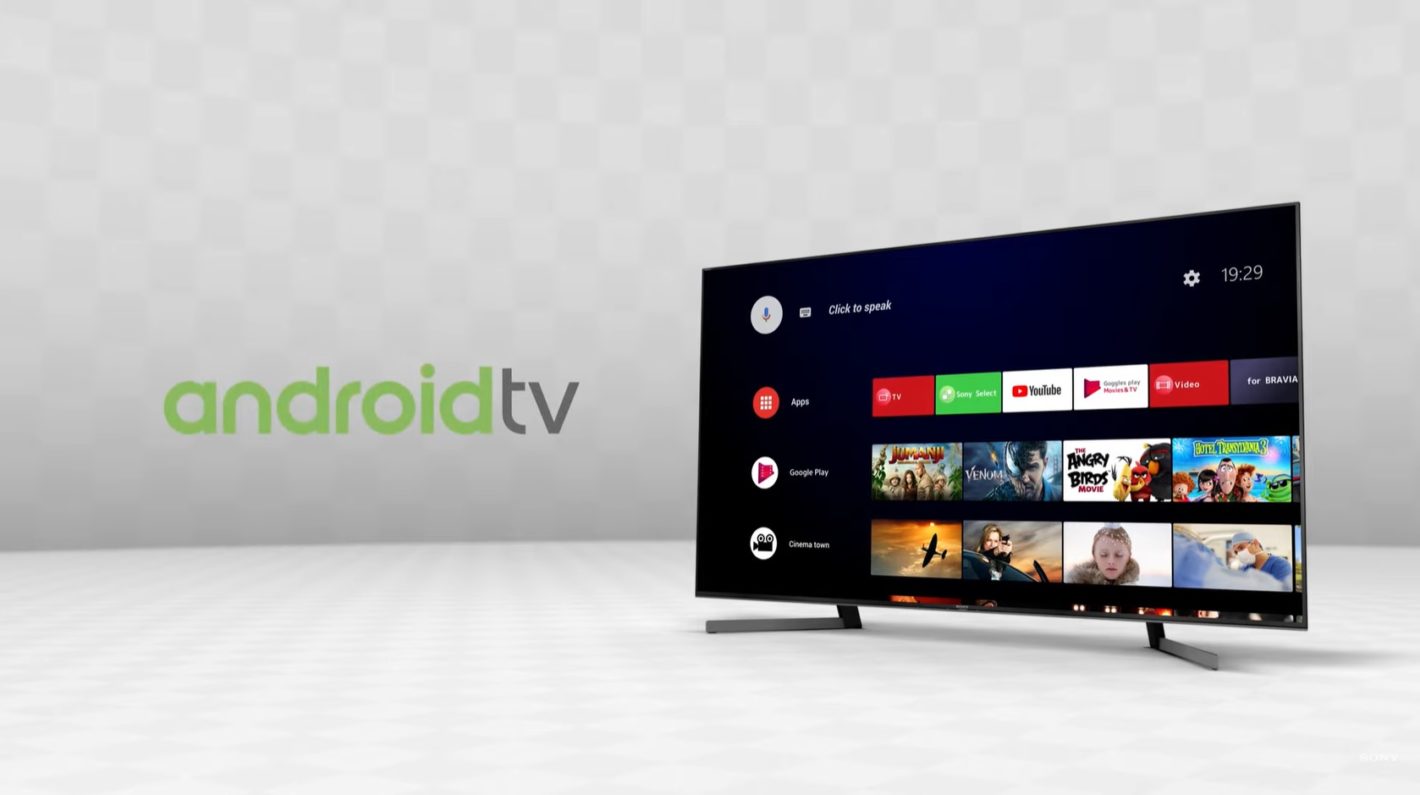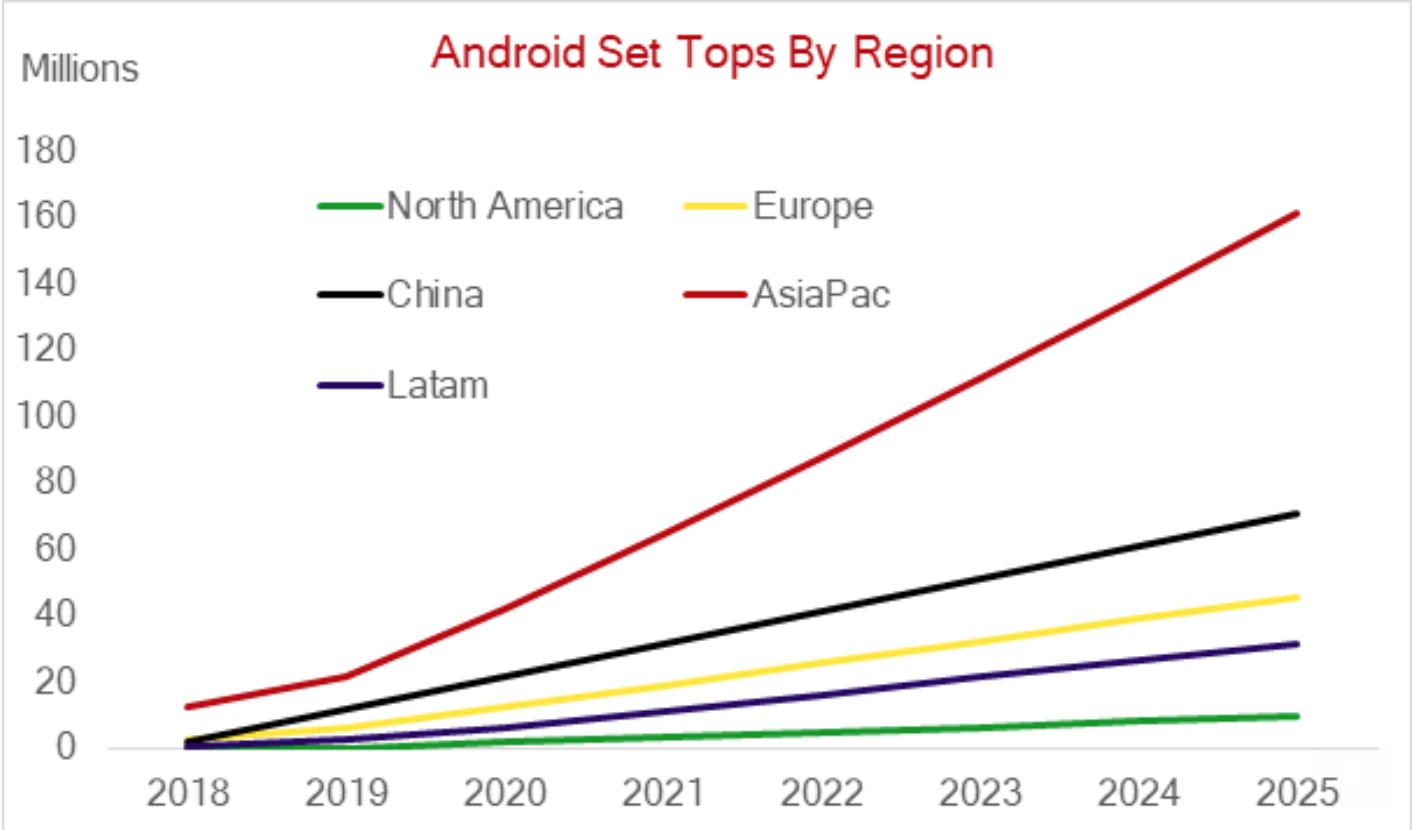Android TV: Everything You Need to Know About the World’s Fastest Growing Video Operating System
From pay TV set-tops to smart TVs to the latest OTT devices, how Google’s increasingly popular middleware is popping up everywhere

If you’re having trouble telling Android TV from the profusion of other Alphabet-connected brands (YouTube, YouTube Premium/Red, YouTube TV, Chromecast, Android mobile … you get the idea) involved in distributing some flavor of content onto some set of devices, don’t feel bad.
Shifts in strategy, focus and name have been common over the years at Alphabet (also a name change), as Google continues to diversify far beyond its search origins. So too what’s happening with Android TV.
But the video operating system now called Android TV is a six-year-old spinoff of Google’s Android mobile operating system, which runs about three in four handsets in the world. Given away for free, the mobile version is a crucial part of Google’s dominance in online advertising dollars.
Android TV is pushing for the same sort of omnipresence, nudging its way into seemingly every corner of the global TV ecosystem.
Android TV’s quest for world hegemony likely won’t be completely successful: the Chinese government would prefer its citizens’ TV-delivery systems not be run on U.S.-based software, protecting a key market for Huawei’s Harmony OS, according to Rethink Technology Research.
But Android TV is making inroads pretty much everywhere else outside China.
In the pay TV business across North America, Europe and Latin America, operators have turned to Android TV en masse as a simple, low-cost solution for meshing managed services with access to popular OTT platforms.
NEXT TV NEWSLETTER
The smarter way to stay on top of the streaming and OTT industry. Sign up below.
Android TV combines the vast flora and fauna of the Google Play Store, where users can find Netflix, Hulu, Amazon Prime Video, Disney Plus … or pretty much whatever streaming service they’re looking for. Android TV also combines the voice capability of Google Assistant and is testing a new system that will give streaming services the option of letting new subscribers sign up for their platforms on Android TV.
In the pay TV market, Android TV must contend with RDK, or Reference Design Kit, created by a consortium of big cablers such as Comcast, Cox, and Liberty Global.
Also Read: Android TV to Become Dominant Global Pay TV Set-top Platform: Research Group
RDK would in turn prefer open specifications in their devices’ tech stacks. The consortium recently announced the RDK stack is on 60 million devices, up 20% in a year. Rethink projected that RDK will continue to dominate the U.S. market the next five years, with a 57-percent share.
Nonetheless, Rethink suggests Android TV is on its way to becoming the dominant pay TV set-top operating system worldwide, even in Asia-Pacific, where Rethink projected Android TV-based devices would pass 160 million units over the next five years. As the sector consolidates, Android TV is well positioned to thrive.

Building a Presence
Over the past three years, Android TV has built that significant presence as a middleware solution for set-top boxes in traditional pay-TV. In North America, for example, AT&T TV—the recently launched streaming service that looks a lot like traditional pay-TV and was designed to attract some of the 1 million customers who have fled DirecTV and U-verse just in the first quarter—comes with a user-installable set-top box that uses Android TV.
Meanwhile, National Cable TV Cooperative (NCTC)—which represents 750 small and mid-sized cable operators—just announced deal with Korea’s Kaon Media for a set-top box built around Android TV.
Also Read: Android TV Infiltrates Cable Co-op NCTC Through Kaon Set-top Deal
Beyond the inroads carved by the “operator tier” version of Android TV in the global pay TV market, the middleware is carving out a big niche in the direct-to-consumer connected TV realm, infiltrating everything from OTT devices to smart TVs to video projectors.
Android TV is the leading smart TV operating system globally, controlling around 40% of the world market, according to Statista. And it continues to catch up to Roku and Amazon Fire TV in the area of connected TV devices.
TiVo is basing its big entry into the OTT device market, the TiVo Stream 4K, around Android TV. But the middleware has been showing up in streaming boxes like Dish Network’s AirTV for several years.
New Devices
Meanwhile, Google is developing a new version of its Chromecast OTT-streaming device based on Android TV. That marks a big change for Google/Alphabet. It developed Chromecast even before Android TV’s predecessor came along. It was intended to run small, cheap streaming devices that could stream video “cast” from a user’s phone onto a TV screen.
The new Chromecast/Android TV mashup, branded "Chromecast with Google TV", reportedly also would get a remote, instead of relying on users’ phones.
Google debuted Sabrina, a new HDMI dongle, at retail on Sept. 30 with a $49.99 price point.
Chromecast has a moderate 11% share of the OTT streaming market, lagging well behind industry leader Roku and Amazon’s Fire devices.
That’s still better than Android TV in the direct-to-consumer OTT market, but the new device would bring not just that integrated access to traditional networks and OTT apps such as Netflix and YouTube (of course) but also voice control over remotes, a hot trend.
Beyond streaming boxes and smart TVs, companies including Chinese electronics giant Xiaomi are building Android TV into inexpensive video projectors, perhaps a first beachhead in another up-and-coming CE sector where the Google OS could potentially build a dominant position as other makers come in.
Also Read: Android TV Projector Gets Netflix Support for First Time
As all this proliferation of Android TV is happening, Google is still evolving the Android TV interface, in ways that further integrate the gargantuan bank of ad-supported and other content on YouTube among the big streaming services and the more traditional networks available on everyone’s STB. The updated interface now features pandemic-friendly YouTube content focused on COVID-19 news, things to do at home such as cooking and fitness, and free ad-supported movies.
Android TV also now has HDR support for CBS All Access. The built-in Chromecast component of Android TV lets users cast music services like Spotify in the background as they look for something to watch.
Also Read: Android TV Adds New YouTube Search Features
Hollywood long kept apart the worlds of film, TV and “home entertainment,” never mind the online-streaming upstarts. Increasingly, hastened by the pandemic, Hollywood’s different windows are facing unprecedented smearing of those differences.
Is an Android TV-based Chromecast device Google’s answer to providing users all of the content out there from Hollywood and far beyond?
David Bloom of Words & Deeds Media is a Santa Monica, Calif.-based writer, podcaster, and consultant focused on the transformative collision of technology, media and entertainment. Bloom is a senior contributor to numerous publications, and producer/host of the Bloom in Tech podcast. He has taught digital media at USC School of Cinematic Arts, and guest lectures regularly at numerous other universities. Bloom formerly worked for Variety, Deadline, Red Herring, and the Los Angeles Daily News, among other publications; was VP of corporate communications at MGM; and was associate dean and chief communications officer at the USC Marshall School of Business. Bloom graduated with honors from the University of Missouri School of Journalism.

